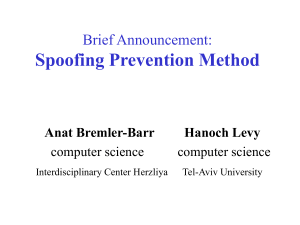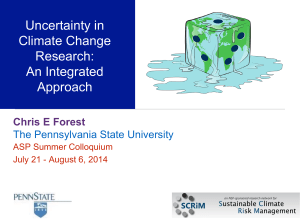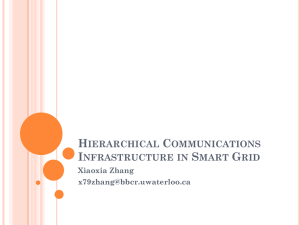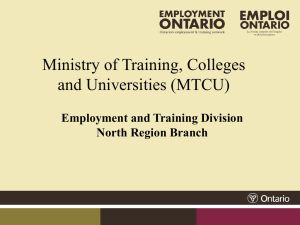4_University of Genoa_Federico Delfino
advertisement
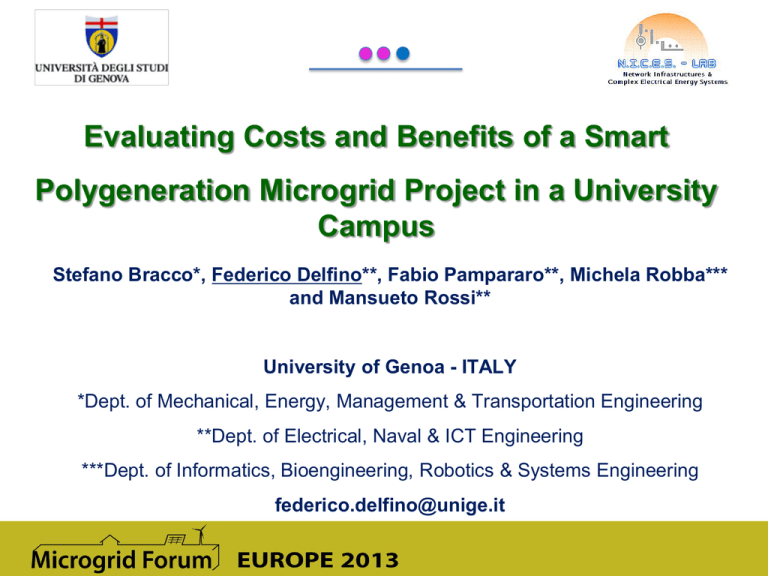
Evaluating Costs and Benefits of a Smart Polygeneration Microgrid Project in a University Campus Stefano Bracco*, Federico Delfino**, Fabio Pampararo**, Michela Robba*** and Mansueto Rossi** University of Genoa - ITALY *Dept. of Mechanical, Energy, Management & Transportation Engineering **Dept. of Electrical, Naval & ICT Engineering ***Dept. of Informatics, Bioengineering, Robotics & Systems Engineering federico.delfino@unige.it Outline of the presentation • The Savona Campus: a research & teaching facility of the University of Genoa • The Smart Polygeneration Microgrid (SPM) project • The Smart Energy Building (SEB) project • Economic & Environmental Analysis o Reduction of annual energy operating costs o Reduction of CO2 emissions • Conclusions The Savona Campus: a R&T facility of the University of Genoa • 50,000 square meters • courses from the Faculties of Engineering, Medicine, and Media Sciences • laboratories, research centers and private companies (several operating in the environment &energy field) • library, residences, canteen, café, etc… The Smart Polygeneration Microgrid (SPM) Project • Special project in the energy sector funded by the Italian Ministry of Education, University and Research (amount 2.4 M€) • SPM is a 3-phase low voltage (400 V line-to-line) “intelligent” distribution system running inside Savona Campus and connecting: • 2 mCHP Gas Turbine (95kWe, 170 kWth) fed by natural gas; • 1 PV field (80 kWp); • 3 CSP equipped with Stirling engines (3 kWe; 9 kWth); • 1 absorption chiller (H2O/LiBr) with a storage tank; • 1 electrical storage: NaNiCl2 batteries (100 kWh) • 2 PEV charging stations. The Smart Polygeneration Microgrid (SPM) Project SPM one-line diagram: - 400 V distribution system (ring network, 500m long) -five switchboards The Smart Polygeneration Microgrid (SPM) Project planning & management DEMS SPM planning, supervision & control system SICAM supervision & control IEC 61850 field data acquisitions & local automation RTU TM 1703 ACP The Smart Polygeneration Microgrid (SPM) Project SPM ICT infrastructure The Smart Polygeneration Microgrid (SPM) Project Main goals: • to build a R&D facility test-bed for both renewable and fossil energy sources • to promote joint scientific programs among University, industrial companies and distribution network operators Day-ahead production scheduling of dispatchable sources and storage exploiting renewables forecast and optimization techniques • to optimize thermal & electrical energy consumptions, minimizing the CO2 emissions, annual operating costs and primary energy use of the whole University Campus The Smart Energy Building (SEB) Project • Special project in the energy efficiency sector funded by the Italian Ministry for Environment (amount 3.0 M€) • SEB is an environmentally sustainable building connected to the SPM, equipped by renewable power plants and characterized by energy efficiency measures: • Geothermal heat pump • PV plant on the roof (20 kWp) • Micro wind turbine (horizontal axis, 3 kW) • High performance thermal insulation materials for building applications • Ventilated facades SPM & SEB inside the Savona Campus of the University of Genoa • SEB is an “active load” of the SPM SEB is an energy “PROSUMER” Storage-related research activity • SPM OPTIMAL SCHEDULING DEMS uses o costs and revenues functions; o forecast of electric and thermal energy demand; o operative constraints (equipment ratings, maximum power ramp, etc.); o forecast of the renewable units production by resorting to weather services and historical records to compute a scheduling for dispatchable sources including storage, which minimizes the daily energy costs. The optimization process has a time-horizon of 1 day (typical of a day-ahead energy market session), subdivided in 15 minutes time-intervals. The optimization method is based on linear programming. • This research line results at the storage level in an automatic production shifting application Storage-related research activity PV Production & Demands Production from dispatchable sources Storage state of charge variation on a typical winter day Economic & Environmental Analysis • Two different scenarios are considered AS-IS Without SPM & SEB TO-BE With SPM & SEB • Electrical Energy → National Grid • Thermal Energy → 2 boilers (gas,1000 kWth) • Electrical Energy → National Grid + SPM + SEB • Thermal Energy → 2 boilers + SPM + SEB AS-IS scenario: energy consumptions and operating costs Including also maintenance cost TO BE scenario: share of electricity and heat generation ELECTRICITY ˜ 37% delivered by SPM and SEB generation units HEAT ˜ 25% delivered by SPM and SEB generation units SPM / SEB energy consumption and production Assumptions: -winter operation for mGTs, 2000 hours at rated power -absorption chiller turned off Calculation of the total operating costs for the 2 scenarios C T _ A S IS E E C A S IS e pp T E C A S IS T E S pp C m _ A S IS C T _ T O B E E el _ G rid e pp E th _ B oiler T E S pp C m _ T O B E E el _ SP M E el _ SE B e f M f _k pf _k k C 65 , C 30 where: E el _ G rid E E C AS IS E el _ EH P E el _ SPM E el _ SEB E el _ SEB E th _ Boiler T E C AS IS E th _ SPM E th _ SEB ; M = m3 natural gas used by f_k each mGT and Cm and pf being respectively the maintenance cost and the natural gas price for the mGTs Calculation of the total operating costs for the 2 scenarios Calculation of the CO2 emissions for the 2 scenarios C O 2 _ A S IS E E C A S IS C O 2 _ TO BE E el _ G rid e f n el _ G rid e f n el _ G rid T E C A S IS e f NG e f NG O f B oiler L H V E th _ Boliler Of + M Boiler LH V k C 65 , C 30 f _k where: ef-n = 0.465 tCO2/MWhel (the emission factor of the Italian electrical mix); ηel_Grid =0.9 (national electrical grid efficiency); ef-NG = 1.961·10-3 tCO2/m3 (natural gas emission factor); Of = 0.995 (natural gas oxidation factor); LHV=9.7·10-3 MWhpe/m3 (natural gas lower heating value). Calculation of the CO2 emissions for the 2 scenarios Economic & Environmental Analysis Economic and environmental benefits provided by the system SPM + SEB can be further increased by: • using the mGTs in trigeneration asset (resorting to the absorption chiller) in order to cool the library of the Savona Campus (now cooled by means of an electrical heat pump) during summer months (+ 600 working hours for the mGTs with respect to the examined case) Conclusions • The “Sustainable Energy” R&D infrastructures under construction at the Savona Campus of the University of Genoa have been described and the main research lines that can be investigated by means of their use have been outlined • An approach has been presented to assess the Campus operating costs, CO2 emissions and primary energy saving on a yearly time-scale • It has been shown that the Smart Polygneration Microgrid (SPM) and the Smart Energy Building (SEB) contribute to increase the overall energy efficiency of the Campus, lowering its environmental impact • It should be underlined that the revenues obtained by the improved energy performances of the whole Campus can be then employed to financially support research activities and to yearly upgrade the two pilot plants SPM + SEB

